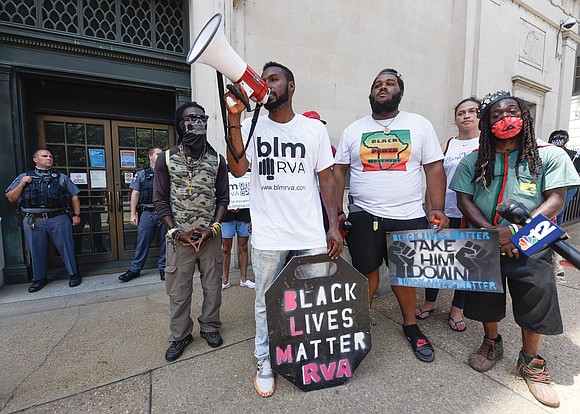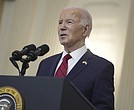Virginia Supreme Court hears arguments in Lee statue cases
Jeremy M. Lazarus | 6/10/2021, 6 p.m.

Can a group of landowners block the governor and the legislature from removing a giant symbol of white supremacy?
No, said Virginia Solicitor General Toby J. Heytens on Tuesday as he urged the Virginia Supreme Court to uphold Gov. Ralph S. Northam’s authority to take down the statue of the traitorous, slavery-defending Confederate Gen. Robert E. Lee from Richmond’s Monument Avenue.
Yes, said Patrick Mc- Sweeney, the attorney for three property owners seeking to block the statue’s removal, told the court. He called on the justices to find that the state flouted its Constitution and laws in illegally trying to remove the statue.
The state’s highest court heard arguments surrounding litigation that began in Richmond shortly after Gov. Northam announced on June 4, 2020, that the Confederate statue would be removed. He made the announcement 10 days after George Floyd was killed under the knee of a Minneapolis police officer, which triggered nationwide protests — including in Richmond and other Virginia cities—against police brutality and racial injustice.
In Richmond, the Lee statue, long a symbol of racism and racial oppression became a rallying point for demonstrations that went on for several months. The statue’s pedestal was covered with paint, signs and other expressions of protest. Demonstrators also pulled down several other statues of Confederates on Monument Avenue and around the city, prompting Mayor Levar M. Stoney to order the removal of city-owned Confederate statues under emergency authority and later approval by City Council.
A member of the state Attorney General’s Office, Mr. Heytens told the justices at the virtual hearing that the 12-ton Lee statue no longer represents anything the state agrees with and noted that view was reflected in the General Assembly’s vote last year to repeal the 1889 resolution accepting the land and the statue.
He reminded the justices that the display of the 131-year-old statue represents “government speech” and that “no court has ever recognized” an individual right to “dictate the content of core government speech about a matter of racial equality, and this court should not be the first one ever to do so.”
According to Mr. McSweeney, the gift of the land and statue to the state came with an enforceable easement, and he urged the right of successor property owners to uphold that easement.
Joseph E. Blackburn Jr., who separately represents William C. Gregory, an heir of two of the donors of the land on which the Lee statue sits, urged the court to stop the state “from breaking its word” given in 1889 that it would protect and maintain the statue for all time.
Both Mr. Gregory and the three property owners Mr. McSweeney represents lost in Richmond Circuit Court. The
state Supreme Court took up the cases in February, leaving in place an injunction barring removal of the statue over the objection of Attorney General Mark R. Herring and Mr. Heytens.
Richmond Circuit Court Judge Bradley B. Cavedo found that Mr. Gregory had no specific legal right to bring his suit, while Judge W. Reilly Marchant found that the General Assembly’s repeal of the 1889 resolution changed public policy and terminated the deed restriction on which the property owners’ suit is based.
Experts said that it is likely that the court would issue its opinion within six to nine weeks, though it could come sooner.






